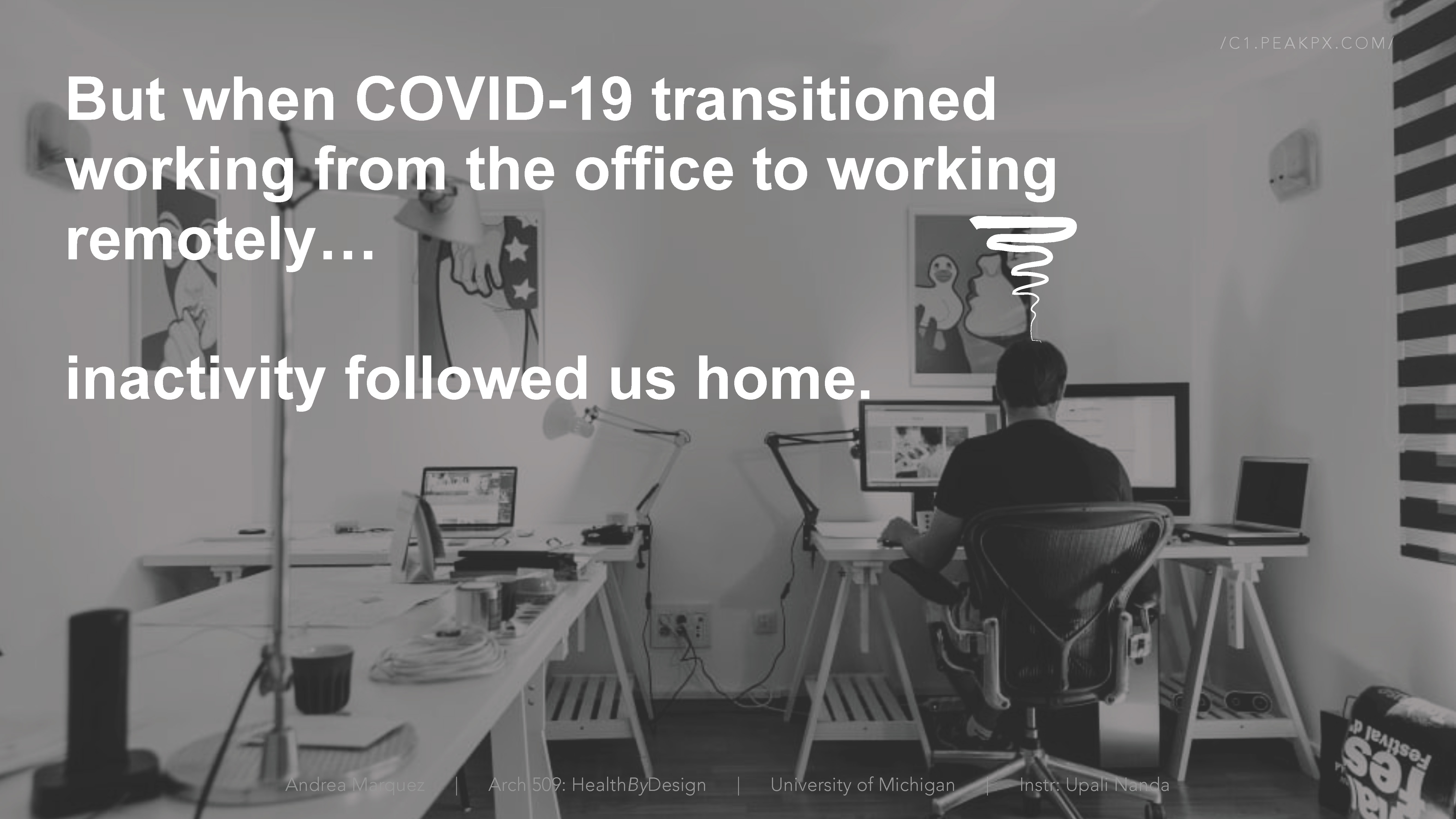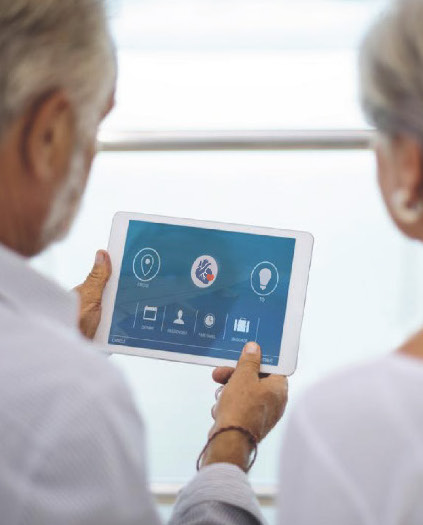︎ weHeartLIVE!
Stimulating multi-generational health through live connections and inter[activity].
By Andrea Marquez ︎

The closure of gyms, parks, and cold weather challenges may limit a once active population to #stayhome- especially when social distancing is widely encouraged during a global pandemic. Since the workplace can happen anywhere, similar behavior patterns (such as physical inactivity) come along with it.

Transforming work wellness policy / 2020
According to the American Heart Association (AHA) 77.5% (4 out of 5) adults do not achieve the recommended physical activity guidelines. Nearly half (48%) of Americans have some sort of cardiovascular disease (CVD). It is projected that by 2035, the total costs of CVD will reach up to $1.1 trillion (AHA 2019). Physical inactivity impacts heart health, which may lead to cardiovascular disease, and this is the leading cause of death in the United States (AHA 1999-2016). In addition, 25% of patients with heart failure experienced moderate or high levels of social isolation. With current social distancing protocols, this number could be even higher and will be the topic for future research endeavors to study.
What if there was a way we can create inter[active] environments (that promote physical activity) while improving social (mental) connectivity across different ages? weHeartLive! Is a heart health-oriented platform to engage in physical or mental health activities- live- online or in person. Group motivation and live feeds will result in higher participation, which lowers social isolation and inactivity by improving physical and mental health, decreasing risk for cardiovascular disease. This project report contains research, case studies, and interviews for developing this intervention that can be relevant during and beyond the current pandemic.


Design to Outcomes
The implementation of the project and its projected outcomes provide opportunities for more group interaction regardless of location. This can enhance social connectivity, thus improving overall mental health. With group motivation, participation in physical activity can increase. These lifestyle behavior strategies in coexistence contribute towards AHA’s Simple 7, which can reduce the risk of cardiovascular disease.
The future contains many technological innovations and possibilities for remote interaction; implementing pro-active environments will improve intergenerational connectivity as well as cardiovascular health and research methods over time. This can be encouraged through new cross-disciplinary partnerships, engaging virtual networks, and influencing behavioral normatives in working environments. There are opportunities in utilizing existing mediums to explore social connectivity, especially in the midst of social isolation.
COVID-19 is impacting global health. “You might think heart disease is linked only with physical activities… While these habits do heighten the risk of [CVD], your thoughts, attitudes, and emotions are just as important” (APA 2019). With our online capabilities and resources, there is something we can do about staying stronger together.

︎
Works Cited
American Heart Association (2018). “Total Cardiovascular Disease Mortality in the United States” (1999-2016). + (2019). Based on 2013-2016 data. Heart Disease and Stroke Statistics—Jan 31, 2019 Update.
American Psychological Association. (2019) Mind/body Health. https://www.apa.org/helpcenter/heart-disease
Boniface et al. (2017) “Exploring how digitization and Internet connectivity influence networks of innovation for the Next Generation Internet”.
Brohl et al (2017) “Mobile and Wearable Interaction for the Elderly”.
Clanton Harpine E. (2015) Is Intrinsic Motivation Better Than Extrinsic Motivation?. In: Group-Centered Prevention in Mental Health. Springer, Cham.
Coenen P, Huysmans MA, Holtermann A, et alCan socioeconomic health differences be explained by physical activity at work and during leisure time? Rationale and protocol of the active worker individual participant meta-analysisBMJ Open 2018;8:e023379. doi: 10.1136/bmjopen-2018-023379
Eisenberg, Daniel. (2019) Countering the Troubling Increase in Mental Health Symptoms Among U.S. College Students. Editorial / Journal of Adolescent Health 65 573e574. https://www.jahonline.org/article/S1054-139X(19)30408-2/pdf
Ibrahim, Andrew. (2020) Visiting Lecturer from HOK Dept of Medicine. University of Michigan: Taubman College of Architecture and Urban Planning.
Manemann, Sheila M. et. al. (2018) Perceived Social Isolation and Outcomes in Patients With Heart Failure. Journal of the American Heart Association. Vol 7. no. 11. https://doi.org/10.1161/JAHA.117.008069
Martin et al. (2017) “Visual Representations of Digital Connectivity in Everyday Life”.
Mathers, Matt (2020). “Coronavirus: 28,000 Virtual Volunteers ‘adopt A Grandparent’ To Help Carehome Residents During Lockdown” https://www.independent.co.uk/life-style/health-and-families/health-news/coronavirus-lockdown-virtual-volunteers-adopt-grandparent-carehome-self-isolation-mental-health-a9442181.html
Morisson A. (2019) A Typology of Places in the Knowledge Economy: Towards the Fourth Place. In: Calabrò F., Della Spina L., Bevilacqua C. (eds) New Metropolitan Perspectives. ISHT 2018. Smart Innovation, Systems and Technologies, vol 100. Springer, Cham.
So-Hyun Lee, Gwanhoo Lee (2019) Emergent Research Forum (ERF) “Does Activity Tracking Technology Increase Employer’s Wellness Program Participation?